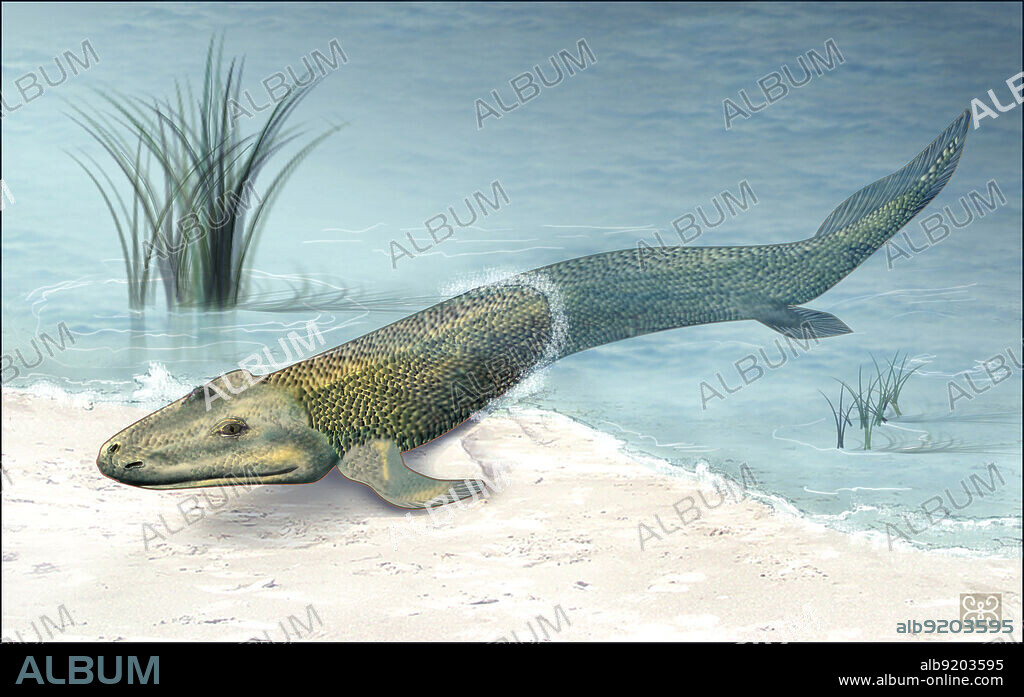alb9203595
Tiktaalik prehistoric fish, artwork

|
Añadir a otro lightbox |
|
Añadir a otro lightbox |



¿Ya tienes cuenta? Iniciar sesión
¿No tienes cuenta? Regístrate
Compra esta imagen.
Selecciona el uso:

Título:
Tiktaalik prehistoric fish, artwork
Descripción:
Ver traducción automática
Tiktaalik roseae, artwork. This extinct lobe-finned fish lived during the Late Devonian period (375 million years ago). It had fishlike fins with thin ray bones and scales. However, it also had a flattened skull similar to a crocodile along with a mobile neck and sturdy shoulders, lungs and ribs, which are seen in tetrapods (four-legged vertebrates). In 2004, a Tiktaalik roseae fossil was found in the Canadian Arctic. When scientists later analyzed its skull, in 2008, it was found to demonstrate a key transitional stage between fish and tetrapods. Tiktaalik roseae is thought to have lived in shallow water, using its fins to prop itself up.
Crédito:
Album / National Science Foundation / Science Source
Autorizaciones:
Tamaño imagen:
No disponible
Tamaño impresión:
No disponible
Palabras clave:
ANIMAL • BIOLOGIA • CAMINAR • COSTA • ESCENARIO • ESTAR AUSENTE • EVOLUCION • EVOLUCIONISTA • EXTINGUIDO • EXTREMIDAD • FÓSIL • FOSILES • HISTORIA • HISTORICO • ILUSTRACION • OBRA DE ARTE • OSEO • PALEONTOLOGIA • PERIODO • PEZ • PREHISTORIA • PREHISTORICO • PRIMITIVA • PRIMITIVO • PUENTE • PULMON • TIERRA (TERRENO) • VERTEBRADO • VIDA SALVAJE • ZOOLOGIA
 Pinterest
Pinterest Twitter
Twitter Facebook
Facebook Copiar enlace
Copiar enlace Email
Email
